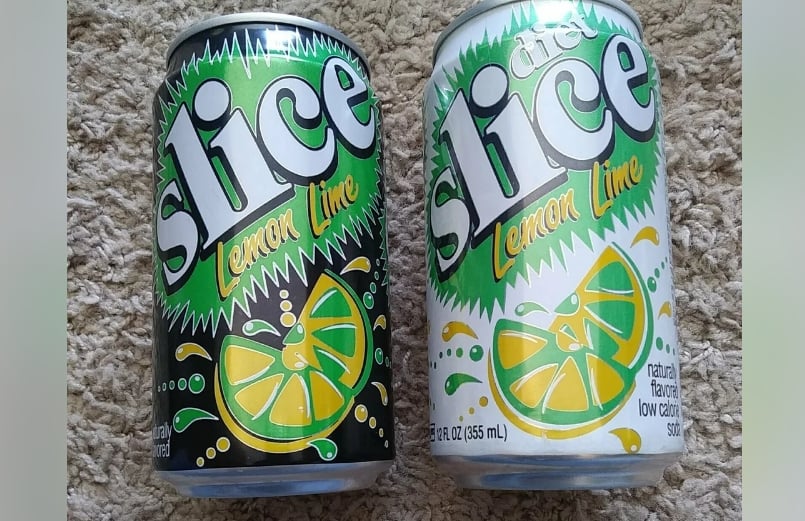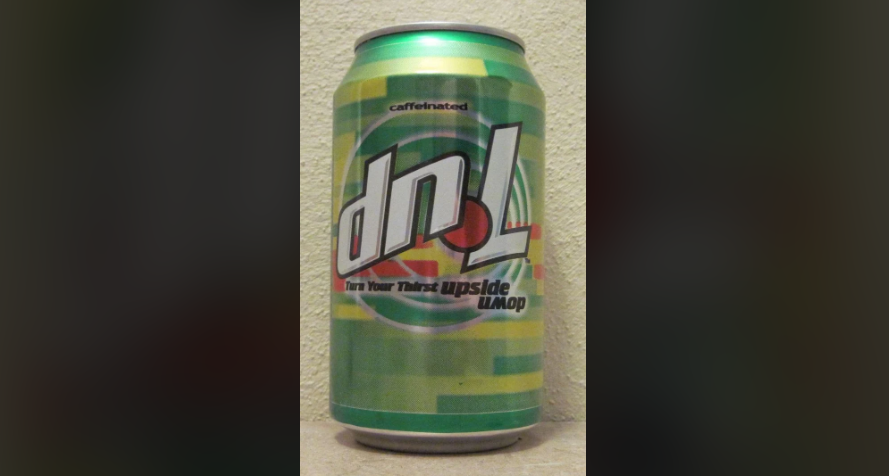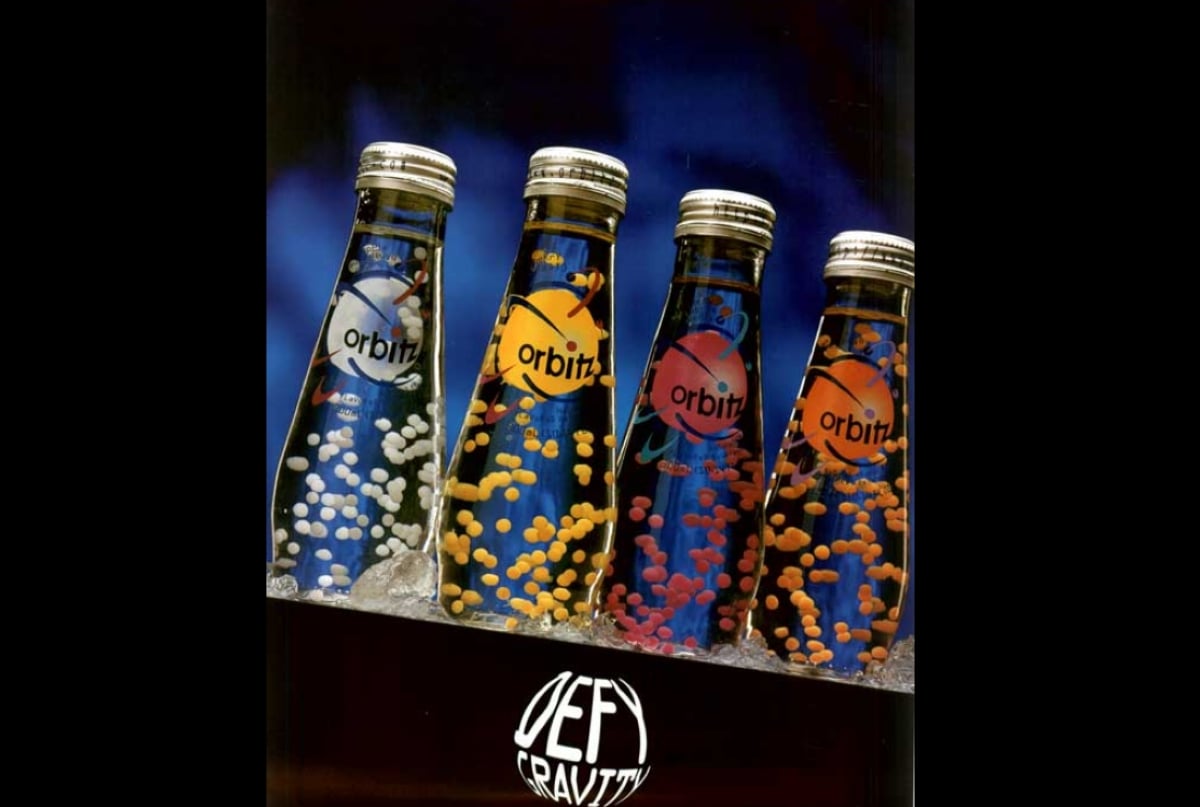Some memories aren’t just moments; they’re flavors. A flash of neon green from a can of Surge, the baffling clarity of a Crystal Pepsi, or the berry-and-vanilla rush of a Dr Pepper Red Fusion. These weren’t just soft drinks; they were liquid time capsules from an era of bold experiments and questionable marketing choices.
They lived fast, fizzed hard, and disappeared from shelves, leaving behind a legacy of cult followings and fan petitions. So, let’s pour one out for the fallen favorites—the beloved soda flavors that are gone, but far from forgotten.
Pepsi Blue (2002–2004)

Remember when sodas started looking like they could glow in the dark? Pepsi Blue was the cobalt-colored concoction that had everyone talking. With its berry flavor and electric hue, it was the drink of choice for the cool kids… for about two years.
Although discontinued in the U.S. and Canada by 2004, it developed a cult following overseas, remaining a staple in countries such as the Philippines (rebranded as Pepsi Pinas) and parts of the Middle East.
PepsiCo capitalized on nostalgia in 2021, relaunching it as a limited-edition U.S. product with hashtag campaigns like #BringBackBlue and promotions featuring Millie Bobby Brown. This revival, available from May to August 2021, marked its brief return to American shelves in 20-ounce bottles and multipacks.
Surge (1997-2003)

Surge was the caffeinated rebel of the soda world, Coca-Cola’s answer to Mountain Dew. Launched in 1997 in the U.S. (Surge originated in Norway as Urge in 1996 before it was rebranded for the U.S. market) with its neon-green aesthetics, this citrus-flavored soft drink packed a punch with its bold taste and edgy extreme-sports marketing. Despite strong initial sales, it was discontinued in 2003 due to declining demand.
However, a grassroots #SURGEMovement campaign by nostalgic fans—including billboards near Coca-Cola headquarters and over 150,000 social media supporters—prompted its 2014 revival as an Amazon exclusive.
The re-release sold out within hours, resulting in limited retail distribution in the Eastern U.S. until its second discontinuation around 2020. Although no longer produced, Surge remains a cult symbol of 1990s counterculture and a fan-driven brand resurrection.
7UP Gold (1988–1989)

7UP decided to go for the gold in 1988 with this spicy cinnamon-and-ginger twist on the classic lemon-lime soda.
Marketed as a “premium” beverage (hence the “Gold” name), its dark amber color and caffeinated formula directly contradicted 7UP’s iconic “Never Had It, Never Will” caffeine-free branding. Consumers found the flavor to be closer to spiced ginger ale than a clear soda, and the identity crisis proved fatal – it captured just 0.1% of the soda market before vanishing in 1989.
Dr Pepper Red Fusion (2002-2004)

In 2002, Dr Pepper broke its 117-year silence on flavor with the introduction of Red Fusion. This cherry-forward twist on the classic—with some fans also detecting hints of berry and vanilla—was the brand’s first new flavor in over a century.
Unfortunately, it didn’t quite hit the spot for Dr Pepper purists and faded away after just two years. Sales initially spiked but plummeted within 18 months, prompting its removal.
Fun Fact: Red Fusion’s brief run marked Dr Pepper’s first major flavor expansion and influenced later limited editions like Dark Berry and Strawberries and Cream. Its metallic-red packaging and racing stripe design remain nostalgic for fans, though attempts to revive it through petitions (e.g., RedFusionRevival.com) were unsuccessful.
Crystal Pepsi (1992–1994)

The ’90s were wild, and nothing screams “radical transparency,” quite like Crystal Pepsi. This clear cola resembled water but had a lighter taste and was far less sweet than regular Pepsi, confusing taste buds everywhere (was it cola or Sprite?). Despite its initial hype, the novelty wore off fast enough for it to be discontinued by 1994.
Although a 2016 reboot, which was more of a limited-time nostalgia campaign than anything else, didn’t achieve much mainstream success, it capitalized on cult interest and social media buzz.
Fun fact: The drink’s clear appearance symbolized the 1990s “purity” trends but clashed with consumer expectations for cola’s caramel-brown familiarity.
Coca-Cola Black Cherry Vanilla (2006-2007)

Coca-Cola got fancy with this flavor fusion in 2006. Combining the sophistication of black cherry with the smoothness of vanilla, it was a short-lived romance that ended in 2007.
After just one year on the market, the beverage was discontinued because it failed to gain sustained popularity, especially when compared to other Coca-Cola variants, such as Cherry Coke. Add to that, its low sales coincided with the reintroduction of Vanilla Coke in the U.S.
Josta (1995-1999)

Before energy drinks were cool, there was Josta. This guarana-based soda from Pepsi was ahead of its time, packing a caffeinated punch that would make modern energy drinks jealous. Sadly, it was too edgy for its own good and disappeared by the turn of the millennium — PepsiCo cited corporate strategy changes as the reason. However, poor market reception and high costs contributed to its discontinuation.
Fun fact: Josta used slogans like “Better do the good stuff now” and targeted youth culture with ads featuring nostalgic themes. Campaigns featured elderly men reflecting on missed youthful opportunities, urging viewers to seize the moment.
Pepsi Twist (2000-2006)

Lemon-lime sodas? Old news. Pepsi Twist added a citrus kick to the classic cola formula with its lemon-flavored formula. First tested in U.S. markets in 1999–2000, the beverage went national in 2001 with a $20M+ marketing campaign featuring celebrities like Britney Spears.
Though it struggled to maintain long-term popularity domestically, the fizzy hybrid had a five-year national run before being discontinued in the U.S. by 2006. Today, it lives on as a cult favorite and remains available in Poland, Bosnia, China, and other international markets.
Slice (1984–early 2000s)

Before every seltzer on the shelf boasted a splash of real fruit, there was Slice. Launched by PepsiCo in 1984, this soda broke ground by being one of the first mainstream soft drinks to contain 10% real fruit juice. Its original lemon-lime flavor was a direct challenger to Sprite and 7UP, quickly expanding into an entire orchard of options, including the wildly popular Mandarin Orange.
Despite its initial dominance and a memorable “We Got the Juice” ad campaign, the brand’s identity became diluted by the late ’90s as the juice content was reduced and competition grew. PepsiCo ultimately phased Slice out in the early 2000s, replacing its spot on the roster with the lemon-lime-focused Sierra Mist (which itself was later replaced by Starry).
dnL (2002–2005)

In a brilliant stroke of early-2000s marketing, dnL was literally 7UP flipped on its head. This neon-green, highly caffeinated soda was everything its parent brand wasn’t: bold, loud, and aimed squarely at the extreme-sports demographic, which Mountain Dew dominated. The flavor was a more aggressive, fruit-forward citrus blast, a stark departure from the crisp, clean taste of 7UP.
Despite its clever branding and energetic launch, dnL couldn’t dethrone the king of citrus-caffeine. The very concept that made it unique—being the “flip side” of 7UP—also created brand confusion. Consumers who expected the familiar qualities of 7UP were baffled, and it failed to poach enough fans from its main competitor. The brand was quietly discontinued by late 2005 or early 2006 and was replaced by 7UP Plus in 2006 (which was also later discontinued).
Fun fact: The beverage was reportedly promoted through major tie-ins including the SSX 3 video game, the 46th Grammy Awards, and “The Lord of the Rings: The Two Towers” movie.
Coca-Cola Blak (2006–2008)

In a bold attempt to merge the morning coffee run with the afternoon soda break, Coca-Cola launched Blak. This sophisticated fusion of classic Coke and coffee extract was marketed to a mature audience, packaged in a sleek, resealable glass bottle. The flavor was a jarring hybrid of familiar cola sweetness and a sharp, bitter coffee aftertaste.
The problem was that it existed in a flavor no-man’s-land: too bizarre for loyal Coke drinkers and not “coffee” enough for caffeine purists. Coupled with a premium price point, Blak struggled to find a large audience and was quietly removed from shelves after less than two years. It was a high-concept experiment that proved some fusions are best left separate.
Honorable mention: Orbitz (1996)

A quick note: While it was famously a non-carbonated fruit drink, no list of disappeared ’90s beverages feels complete without the lava lamp in a bottle. For its sheer novelty and iconic status, Orbitz earns a special shout-out.
This beverage, from the makers of Clearly Canadian, was famous for its tiny, suspended gelatinous spheres (technically gellan gum) that floated in a sugary liquid, making every sip feel like a science experiment. Flavors like Raspberry Citrus and Pineapple Banana Cherry Coconut were as futuristic as their appearance.
Unfortunately, drinking it was a textural puzzle most consumers weren’t interested in solving. The visual gimmick couldn’t save the lackluster flavor, nor could it mask the bizarre sensation of chewy globules mixed with a syrupy drink. Orbitz was discontinued by 1998, cementing its legacy as the ultimate ’90s novelty—a drink that was far more fun to look at than to actually drink. The beverage has become a collector’s item worth $30-$50 on auction sites.

